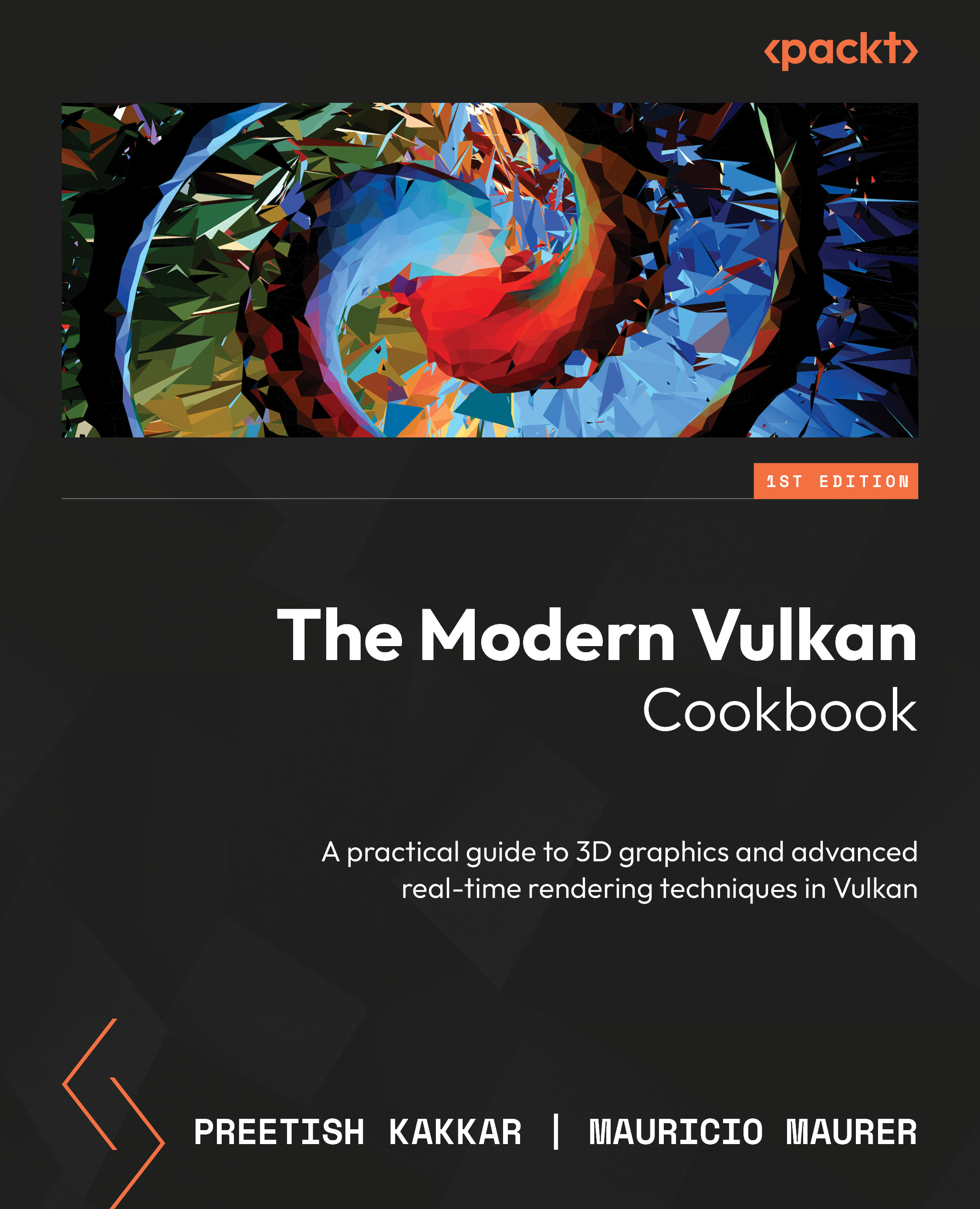Learning about Vulkan objects
The Vulkan API is extensive and many times larger than OpenGL (in any way you’d like to measure). Nonetheless, only a handful of very important objects are necessary to write many types of applications. As mentioned at the beginning of this chapter, the Vulkan API was leveled against the most demanding applications, those that need to control every single minute detail of the hardware to extract the maximum performance. But most applications don’t need all that flexibility and can get by with just the basics.
In this recipe, you will learn what Vulkan objects are and how they relate to each other.
Getting ready
Objects in Vulkan are opaque handles, and their types begin with the letters Vk. A Vulkan instance is called VkInstance, a Vulkan device is called VkDevice, and so on. Some objects need an instance of other objects to be created or allocated from. This dependency creates an implicit logical sequence as to object creation....


























































